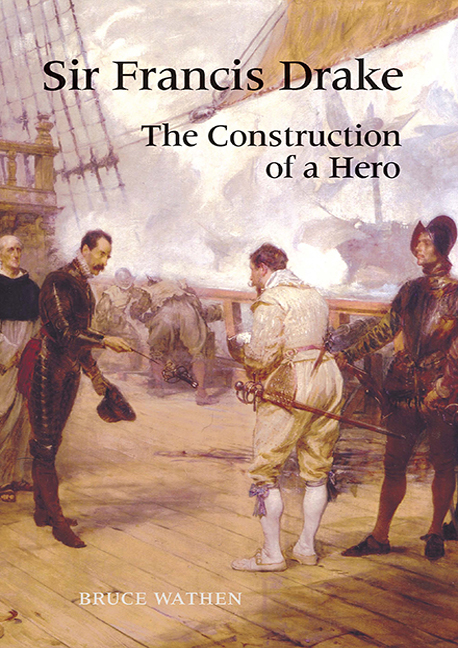Book contents
- Frontmatter
- Contents
- List of Illustrations
- Dedication
- Acknowledgements
- Introduction
- Chapter One Auxilio Divino
- Chapter Two ‘Sir Francis Drake Revived’
- Chapter Three ‘Behold the warrior dwindled to a beau’
- Chapter Four ‘Homage to Britannia’
- Chapter Five ‘Who the New World Bade British Thunders Shake?’
- Chapter Six ‘The Prose Epic of England’
- Chapter Seven ‘Mould him in bronze’
- Chapter Eight ‘Gun to Gun he'll Challenge us’
- Chapter Nine ‘A pirate, and a good one’
- Chapter Ten The Future
- Bibliography
- Index
Chapter Four - ‘Homage to Britannia’
Published online by Cambridge University Press: 11 May 2017
- Frontmatter
- Contents
- List of Illustrations
- Dedication
- Acknowledgements
- Introduction
- Chapter One Auxilio Divino
- Chapter Two ‘Sir Francis Drake Revived’
- Chapter Three ‘Behold the warrior dwindled to a beau’
- Chapter Four ‘Homage to Britannia’
- Chapter Five ‘Who the New World Bade British Thunders Shake?’
- Chapter Six ‘The Prose Epic of England’
- Chapter Seven ‘Mould him in bronze’
- Chapter Eight ‘Gun to Gun he'll Challenge us’
- Chapter Nine ‘A pirate, and a good one’
- Chapter Ten The Future
- Bibliography
- Index
Summary
Here are preserved a number of family portraits, and the sword and buckler of Sir Francis Drake; in the other apartments are the drum used by that commander in his warlike expeditions and the folio black-letter bible which had been his companion in the voyage round the world.
(Samuel Rowe, The Panorama of Plymouth, 1824)The wars with Revolutionary and Napoleonic France are a crucial period when charting the construction of Sir Francis Drake. Between the years 1793 and 1815 (and in the following decade) very little material appeared that was concerned directly with Drake. This does not mean that Sir Francis was on the verge of disappearing into obscurity – enough evidence exists to prove that knowledge of his exploits was still in circulation – but reproduction of the Drake narratives in printed form certainly seems to have slowed. In the previous chapter I suggested that the tradition of Drake as a naval hero was at its most potent when the nation regarded itself as standing alone against the foreign – and usually Catholic –aggressor. Surely, then, Sir Francis was the ideal figure to stir patriotic feelings during the protracted wars with France. How are we to account for the scarcity of material recalling his deeds? Firstly, there was the matter of the maritime present. As the war with France progressed the list of British naval victories began to lengthen. Among them were Howe's ‘Glorious 1st of June’ (1794), when seven French ships escorting a grain convoy were captured or destroyed, Duncan's capture of eleven Dutch ships at the Battle of Camperdown and Jervis's engagement and capture of enemy vessels off Cape St Vincent (both 1797). This series of victories was unparalleled in British naval history but it did not lead to unqualified celebration.The victories posed ideological problems that were not resolved until Napoleon's overthrow of the Directory in 1799. Before this point they could be portrayed as attacks on new found French liberty by reformers or those with Republican sympathies. ‘But as Napoleon's territorial ambitions became clearer, and as many radicals and reformers became increasingly disillusioned with the course of the Revolution, naval victories became less politically contentious.’ Nevertheless, the sea-battles of the 1790s diverted attention from the naval past and focused it very firmly on the present.
- Type
- Chapter
- Information
- Sir Francis DrakeThe Construction of a Hero, pp. 67 - 84Publisher: Boydell & BrewerPrint publication year: 2009

